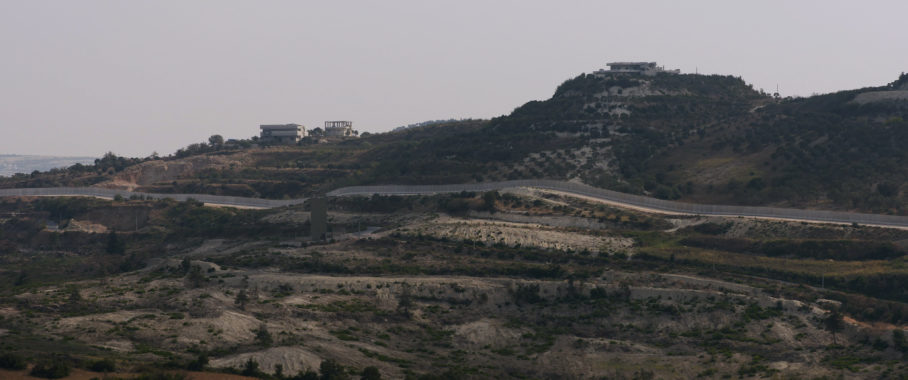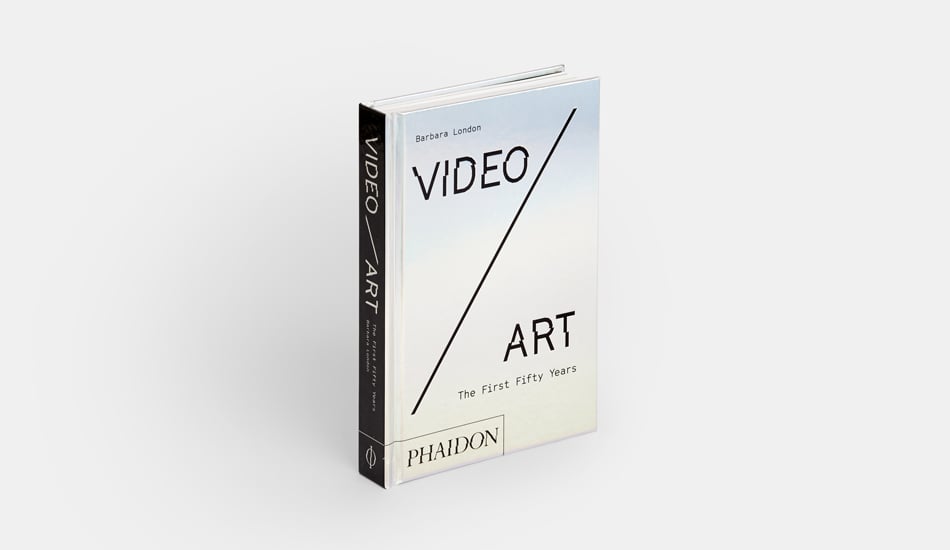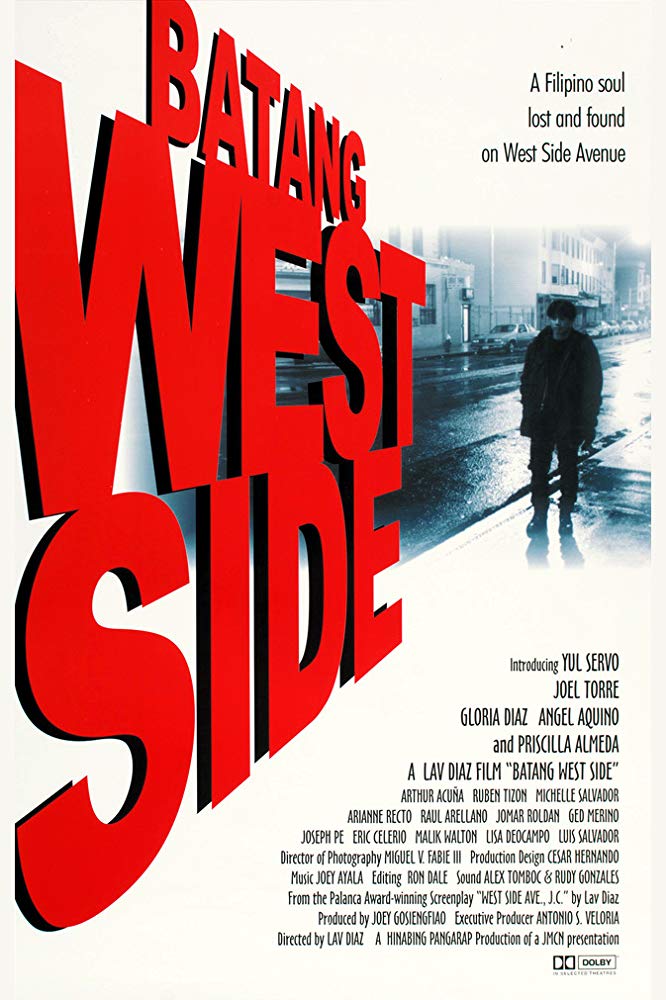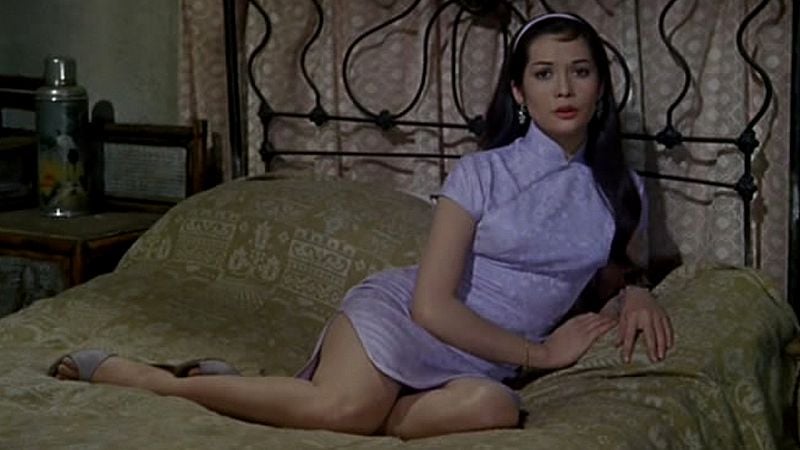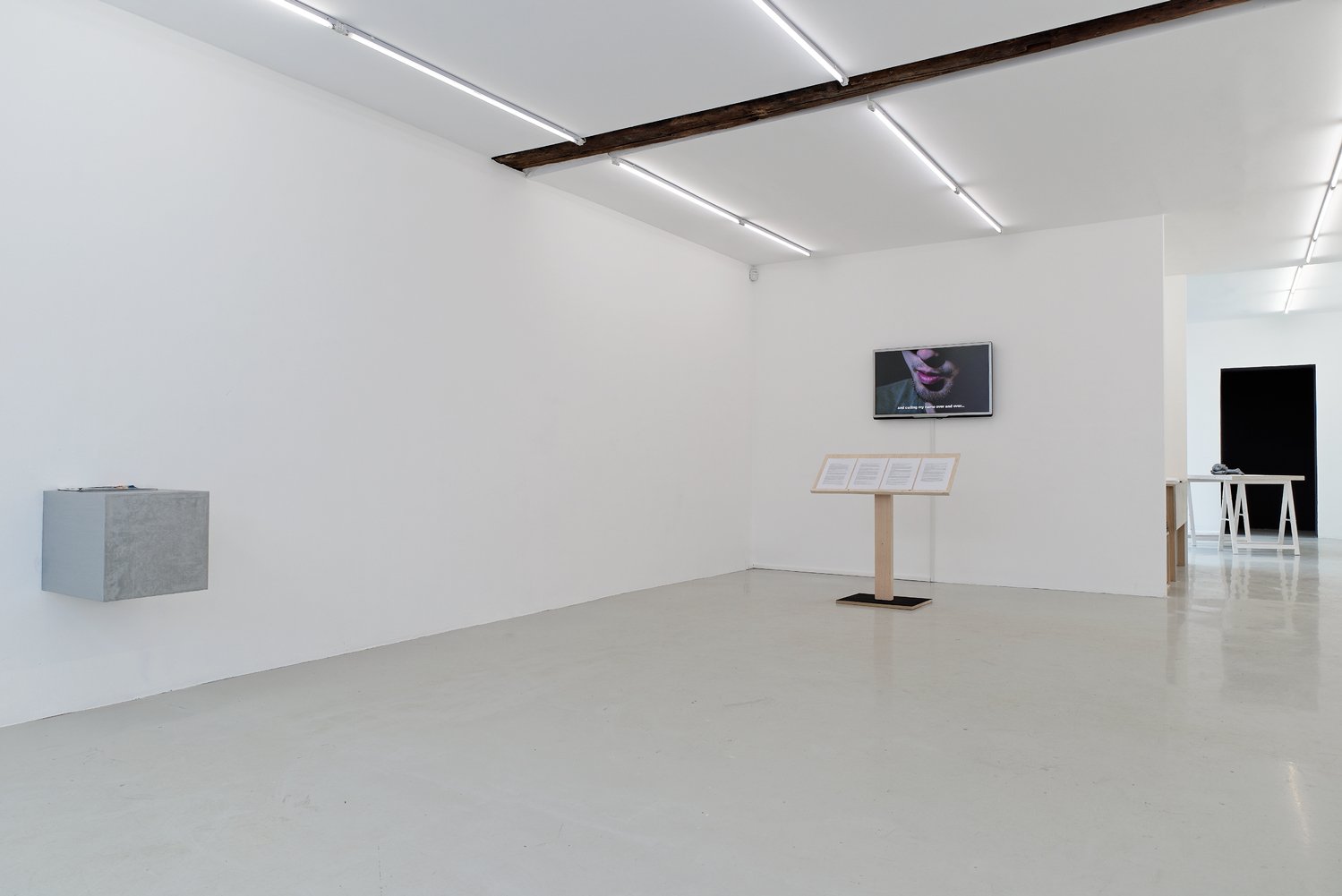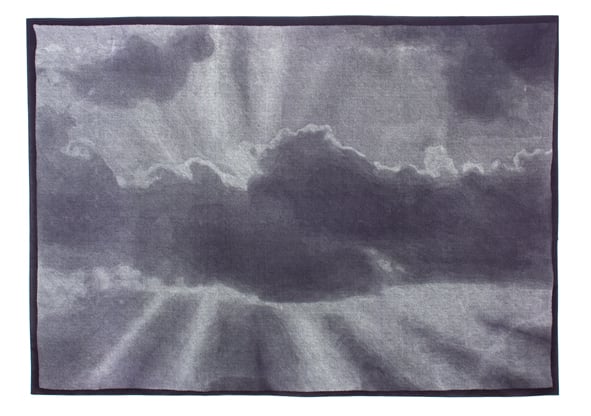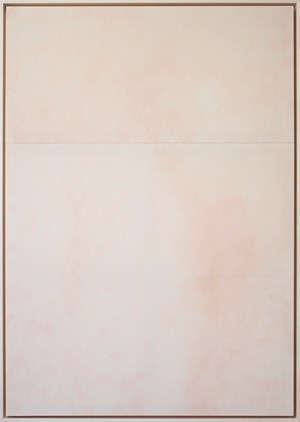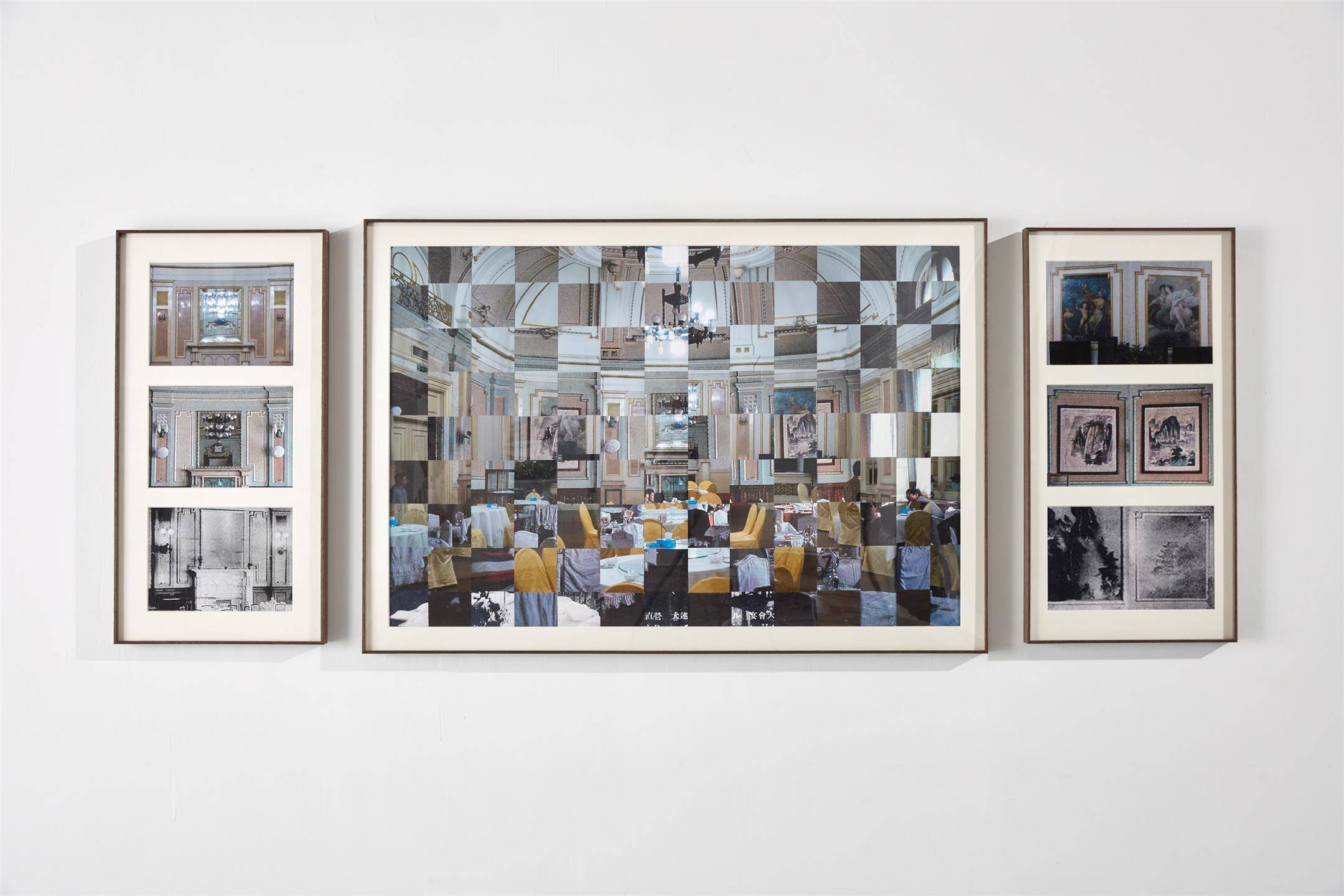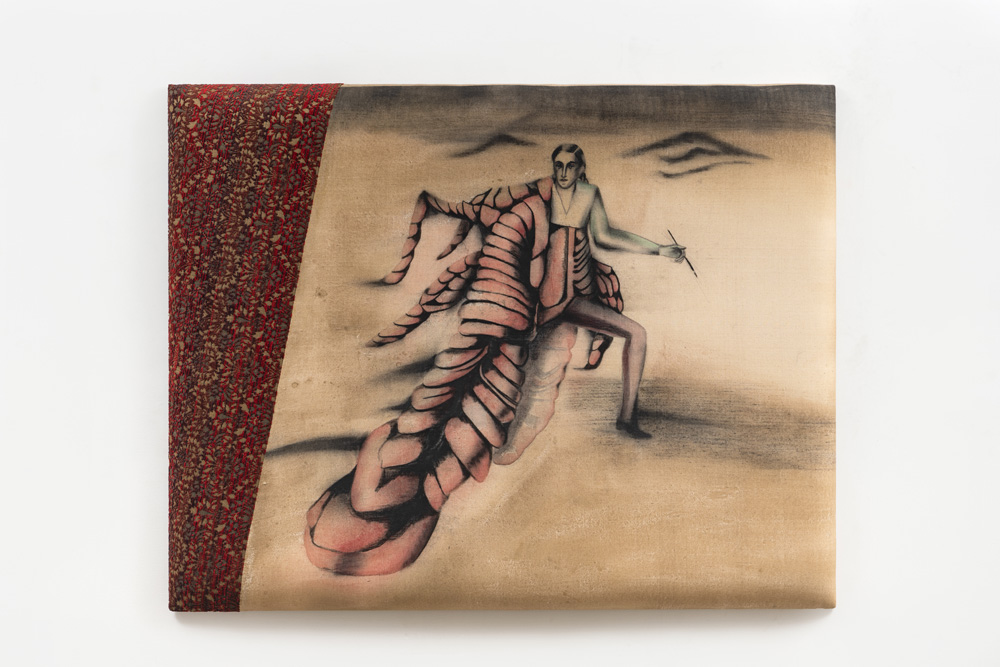
© » KADIST
Tomoko Yoneda
Yoneda’s Japanese House (2010) series of photographs depicts buildings constructed in Taiwan during the period of Japanese occupation, between 1895 and 1945. Yoneda focuses both on the original Japanese features of the houses and on details that have been altered since the end of the occupation. The yet-to-be acknowledged history of the occupation of Taiwan and other East Asian countries by Japan during World War II is subtly disclosed in these pictures.

© » KADIST
Koki Tanaka
This artwork was part of a group of projects presented in the Japanese Pavilion at the Venice Biennale in 2013. These videos show several participants from different backgrounds gathering to create and object or an action. For this video, he brought together five Japanese poets from different movements and styles.

© » KADIST
Koki Tanaka
Walking Through is one of a series of videos—sometimes humorous, often absurd—that record the artist’s performative interactions with objects in a particular site. Here, Tanaka has spread out various objects he collected throughout the city of Guangzhou. By fiddling with a window frame, water buckets, plastic bags, cardboard, soda bottles, and many other things, Tanaka creates fragile, temporary sculptures.

© » KADIST
Koki Tanaka
Tanaka’s unique understanding of objects and materials is reflected in the four photographs that document his Process of Blowing Flour . The images depict the gradual blowing away of a plate of flour held by Tanaka. Because his pose is static throughout the images, his presence is deemphasized and instead the viewer’s attention is drawn to the motion of the flour.

© » KADIST
Hiraki Sawa
Hako (2006) depicts a mysterious and dystopic landscape where the world becomes flat: distance between different spaces, depth of field and three-dimensional perceptions are canceled. Interiors of a Victorian doll’s house, a rippled seascape, a palm tree forest, and a gravel seashore are superimposed, morphing into each other. The hermetic narrative is charged with psychological and mythological aspects.

© » KADIST
Motoyuki Daifu
Seven family members and a cat all squeezed into the small five-room house, where Motoyuki Daifu grew up in Yokohama. This young photographer’s Family Project series documents the chaos of his family’s home life. Viewers of Daifu’s color photographs peer into the cramped, cluttered, and intimate world of their living quarters, what would normally be hidden from outsiders.

© » KADIST
Naoya Hatakeyama
Naoya Hatakeyama’s series Rikuzentakata (2011) documents the devastating aftermath of the 2011 Tohoku earthquake and tsunami in Japan. Throughout the series of sixty C-prints (five of which are included in the Kadist Art Foundation’s collection), Hatakeyama’s photographs depict scenes of torn landscapes and leveled homes, demolished villages and massive piles of detritus pummeled beyond recognition. The images serve as records of disaster, seemingly driven by an intense need to bear witness to collective trauma.

© » KADIST
Naoya Hatakeyama
Naoya Hatakeyama’s series Rikuzentakata (2011) documents the devastating aftermath of the 2011 Tohoku earthquake and tsunami in Japan. Throughout the series of sixty C-prints (five of which are included in the Kadist Art Foundation’s collection), Hatakeyama’s photographs depict scenes of torn landscapes and leveled homes, demolished villages and massive piles of detritus pummeled beyond recognition. The images serve as records of disaster, seemingly driven by an intense need to bear witness to collective trauma.

© » KADIST
Naoya Hatakeyama
Naoya Hatakeyama’s series Rikuzentakata (2011) documents the devastating aftermath of the 2011 Tohoku earthquake and tsunami in Japan. Throughout the series of sixty C-prints (five of which are included in the Kadist Art Foundation’s collection), Hatakeyama’s photographs depict scenes of torn landscapes and leveled homes, demolished villages and massive piles of detritus pummeled beyond recognition. The images serve as records of disaster, seemingly driven by an intense need to bear witness to collective trauma.

© » KADIST
Naoya Hatakeyama
Naoya Hatakeyama’s series Rikuzentakata (2011) documents the devastating aftermath of the 2011 Tohoku earthquake and tsunami in Japan. Throughout the series of sixty C-prints (five of which are included in the Kadist Art Foundation’s collection), Hatakeyama’s photographs depict scenes of torn landscapes and leveled homes, demolished villages and massive piles of detritus pummeled beyond recognition. The images serve as records of disaster, seemingly driven by an intense need to bear witness to collective trauma.

© » KADIST
Naoya Hatakeyama
Naoya Hatakeyama’s series Rikuzentakata (2011) documents the devastating aftermath of the 2011 Tohoku earthquake and tsunami in Japan. Throughout the series of sixty C-prints, Hatakeyama’s photographs depict scenes of torn landscapes and leveled homes, demolished villages and massive piles of detritus pummeled beyond recognition. The images serve as records of disaster, seemingly driven by an intense need to bear witness to collective trauma.

© » KADIST
Kwan Sheung Chi
Kwan Sheung Chi’s work One Million is a video work depicting the counting of bills. Divided into three versions, the video first shows a number of Japanese ten-thousand-yen bills being counted without in an orderly, efficient manner. In Two Million , a similar counting of one-thousand-dollar bills from Hong Kong follows.

© » KADIST
Shay Arick
Part of a series of videos called LIFE, where Shay Arik videos that re-enact iconic journalistic photographs. As explained by the video’s title, the departure point for LIFE #1 is the iconic 1943 photograph published by Life magazine that captures Japanese officer Yasuno Chikao from the Imperial Japanese Navy as he raises his sword, seconds before publically beheading Australian war commando Leonard Siffleet in the shores of Papua New Guinea. In Arick’s restaging there are no onlookers in the scene, the only two figures represented are Chikao and Siffleet: the perpetrator and victim of this fatal act of violence.

© » KADIST
Taro Izumi
Steak House is a video representing two small puppets smearing the artist’s face with paint while he is sleeping. The work is based on modest means and reuses the classic theme of inanimate objects coming to life during the night while humans sleep. Is this the artist’s return to repressed feelings or fatigue provoked by the task?

© » KADIST
Meiro Koizumi
Words by Meiro Koizumi: “The video installation work In the State of Amnesia is made with Mr. Nobuhiro Tanaka, who damaged his brain when he had an accident when he was 21. Since then he has been living with a memory disorder. I asked Mr. Tanaka to memorize a testimony of a Japanese soldier who served in the war in China during WWII.

© » KADIST
Meiro Koizumi
This video installation was made for the exhibition “Journey to the West” held in January 2012 in New Delhi, where a group of curators invited six Japanese artists to produce a work to be made around the relationship between Japan and India. In the framework of this exhibition, Meiro Koizumi decided to use a controversial book of modern Japanese history The Judgement of Justice Radhabinod Pal , as material for his work. Koizumi created a performance combining the paradoxical context of this book with monstrous representation of Indian gods.

© » KADIST
Ozawa Tsuyoshi
Dr. N Song belongs Ozawa’s body of work The Return of Dr. N in which he follows a humorous fictional character based upon the historical figure Dr. Hideyo Noguchi who researched yellow fever in Ghana in 1927. Though Dr. Noguchi was known for his unruly temper and behavior and many of his discoveries were erroneous, he was widely revered in Japanese society. Ozawa’s Dr. N story explores links between Japan and Africa, past and present, fact and fiction, through the commissioned work of Ghanaian painters and musicians working in popular African styles.

© » KADIST
Wang Taocheng
Reflection Paper No. 2 is one of four videos in which Wang attempts to accurately illustrate the writings of influential Chinese Eileen Chang, who published her works during the Japanese occupation of China. Image and text reflect on the everyday experiences of women in society, family, marriage, love, and death.

© » KADIST
James T. Hong
Taiwan WMD (Taiwan and Weapons of Mass Destruction) is part of a long-term research started in early 2010 on the history and aftermath effects of Japanese biological and chemical warfare in China during WWII, as well as the unknown history of Taiwan’s nuclear program. T. Hong’s research is not only an effort to revisit a dark time that complicates certain histories, but more importantly an investigation of how violence is enacted in the name of rationality.

© » KADIST
Adrian Villar Rojas
The two drawings in the Kadist Collection are part of a larger series entitled Las Mariposas Eternas (The Eternal Butterflies). They are studies for two large sculptures that explore the role of monuments and emblems in the configuration of Latin American national identities. The first drawing reproduces an equestrian statue of Juan Lavalle, one of Argentina’s independence heroes.

© » KADIST
James T. Hong
Lessons of the Blood by James T. Hong pieces together interviews, extensive archival and field research, and TV footage addressing Japan’s use of biological warfare and experimentation on Chinese prisoners during World War II, as well as the revisionism of the Japanese government and Chinese survivors’ attempts to live with this horrific history and to find justice. Co-written, directed, edited and produced with Yin-Ju Chen, whose work is also represented in the Kadist collection, Lessons of the Blood is a meditation on propaganda, the ways in which national mythologies can literally infect and poison the most vulnerable among us, and the legacy of World War II in China, presented through the testimonies of survivors, academics, medical experts, nationalists and activists. The film locates its genesis in the publication of the New History Textbook in Japan in 2000, which infamously glossed over the Japanese Empire’s wartime atrocities, sparking rage and violent protests in China and South Korea in 2005.

© » KADIST
Zon Ito
This embroidery on fabric tackles the oneiric and the uncanny to bring about visions of the world. One can discern the methods of nihonga painting (the traditional Japanese style that renders landscape and forms out of subtle shadows), but Ito upsets the balance by destroying perspective. His work is staunchly non-narrative.

© » KADIST
Phan Thao Nguyên
On September 22, 1940 the French signed an accord, which granted Japanese troops the right to occupy Indochina. The Japanese presence in Indochina lasted until the end of World War II and during the occupation, jute supplies from India were interrupted. Jute was used to make sacks as well as gunpowder, a crucial material for the war industry.

© » KADIST
Hassan Massoudy
Drawing & Print (Drawing & Print)
Ranging from Baudelaire to the Koran, each of Hassan Massoudy’s drawings are titled with a quotation from a text. In the case of La beauté sauvera le monde, the text originated from Dostoyevsky’s The Idiot , alluding to aspirations, models of behavior and words of wisdom. The image itself, though generated in a hybrid manner relating to Arabic and Japanese calligraphy, suggests both fluttering flags and buildings rising high out of the desert as one would see in many developing Middle Eastern countries.

© » KADIST
Chia-Wei Hsu
The word Takasago alludes to several things at once. Takasago is the name of a multi-billion dollar Japanese corporation, previously situated in Taiwan pre-World War II. It is also a famous Japanese Noh play, the oldest extant form of performance in Japan, combining dance, costuming/masks, acting, and operatic chants.
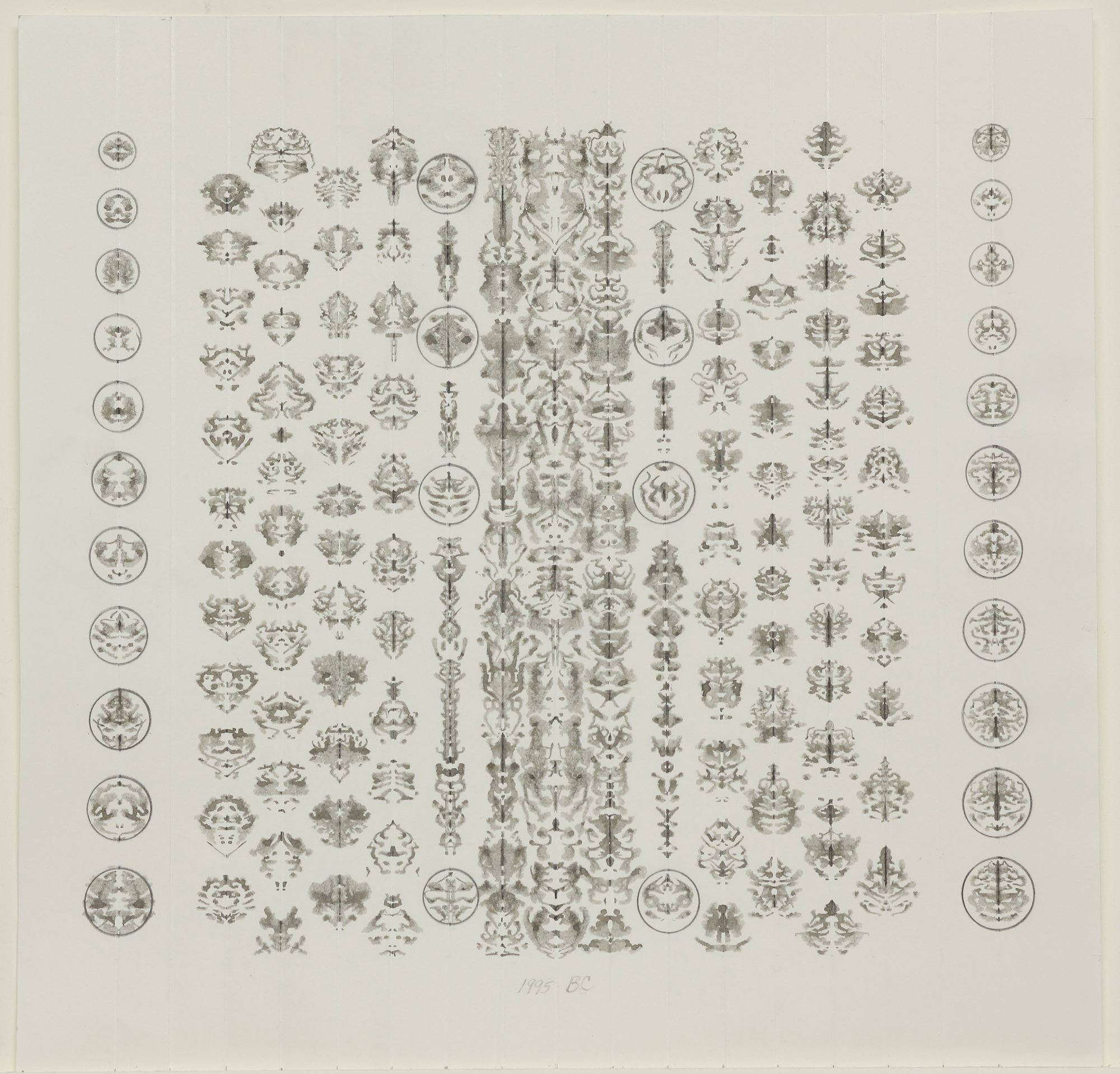
© » KADIST
Bruce Conner
Drawing & Print (Drawing & Print)
Bruce Conner is best known for his experimental films, but throughout his career he also worked with pen, ink, and paper to create drawings ranging from psychedelic patterns to repetitious inkblot compositions. Untitled Inkblot Drawing (CT-1491) (1995) is representative of his aspect of his practice. It is a formal exploration related to many different things: the Rorschach inkblot testing used by psychologists, Japanese calligraphy, Egyptian hieroglyphs, and the intricate patterning Conner saw everywhere in the world around him.

© » KADIST
James Webb
Referencing psychology, philosophy, and spiritualism, A series of personal questions addressed to a Hikimawashi kappa traveling coat by James Webb is an ongoing series in which the artist poses spoken questions to objects via a speaker installed near the object on display. The questions are addressed to the objects as if they were sentient beings able to respond. Each question is left hanging, unanswered for approximately 10 seconds before the next question is posed.

© » KADIST
Phan Quang
Phan Quang’s portrait series Re/cover grapples with a lesser-known history in Vietnam. After World War II, many Japanese soldiers who fought in Vietnam stayed in the country. They married Vietnamese women, had children, and lived in the country until Japan recalled them home.

© » KADIST
Pierre Gonnord
Nakayama is part of a larger body of work by Pierre Gonnord focusing on the analysis and description of the lifestyles of urban youth in large Western cities. These images reflect on new canons of beauty, and the appearances and simulacra of fashion for a new generation. In particular, these works consider themes of androgyny, crossbreeding, and recycling.

© » KADIST
Gozo Yoshimasu
Drawing & Print (Drawing & Print)
Gozo Yoshimasu’s double-sided work on paper Fire Embroidery explores his response to the March 2011 Tohoku earthquake and tsunami. He embarked on the project out of a deep sense of sympathy and commitment, in pursuit of “poetry possible after March 2011”, without exactly knowing where he was heading. He started scribing lines and letters on exceptionally large manuscript paper that he handcrafted every day.
Naoya Hatakeyama
- location: Iwate, Nihon
- year born: 1958
- gender: male
- nationality: Japanese
Gozo Yoshimasu
Gozo Yoshimasu is a prolific Japanese poet, photographer, artist and filmmaker active since the 1960s...
Cao Fei
- location: Beijing, China
- year born: 1978
- gender: female
- nationality: Chinese
- home town: Guangzhou, China
Yosuke Takeda
Yosuke Takeda started from experimenting with darkroom photography production and he shifted over to digital photography, aware that photographic film and paper were becoming obsolete...
Koki Tanaka
- location: Los Angeles, California
- year born: 1975
- gender: male
- nationality: Japanese
- home town: Tochigi, Japan
Lieko Shiga
Based on an instinctive feeling of unease with the convenience and automation of daily life, Lieko Shiga has developed an artistic approach that links questions about the nature of the photographic medium with fundamental questions about life and the means of expressing oneself...
Eric Baudelaire
Currently based in Paris, Franco-American artist Eric Baudelaire has developed an oeuvre primarily composed of film, but which also includes photography, silkscreen prints, performance, publications and installations...
James T. Hong
James T...
Kwan Sheung Chi
Kwan Sheung Chi obtained a third honor B.A...
Meiro Koizumi
Meiro Koizumi is a Japanese video and performing artist, born in 1976...
Park Chan-Kyong
Artist and filmmaker Park Chan-kyong was born in Seoul under the reign of Park Chung-hee, whose authoritarian rule transformed South Korea from an impoverished, war-torn country into what the artist describes as a ‘militaristic, repressive, modern state.’ The shadows of Japanese occupation and the Korean War loomed large over the period, driving the call for nationalism and productivity...
Mika Tajima
Japanese-American artist Mika Tajima creates sculptures, paintings, videos, and installations with a focus on techniques and technologies of control...
Shay Arick
Violence is key to Shay Arick’s practice who employs photography, sculpture, performance, video and drawing as means to understand what motivates people to enact it...
Hassan Massoudy
Hassan Massoudy trained as a classical calligrapher in Baghdad before attending the Ecole des Beaux-Arts in Paris in 1969...
Pooja Gurung and Bibhusan Basnet
Pooja Gurung and Bibhusan Basnet have a joint practice that merges film and visual art...
Phan Quang
Visual artist and photographer Phan Quang stages nuanced compositions that illustrate the relationship between global historical events and the personal histories of families and communities in Vietnam...
Andrew Norman Wilson
Andrew Norman Wilson is an artist, curator, and filmmaker whose practice is mostly based in research and documentary...
Bontaro Dokuyama
Bontaro Dokuyama became an artist after the triple disaster of March 2011 that irrevocably damaged his hometown of Fukushima, “sensing that everything that had been taught to him was a lie.” Previously working as an architect, he then started his artistic practice under a new name in order to underline the beginning of this new life...
Bruce Conner
- location: San Francisco, California
- year born: 1933
- gender: male
- nationality: American
- home town: McPherson, Kansas
Zon Ito
Zon Ito was born in 1971 in Osaka...
Shimabuku
Born in 1969 in Kobe, Shimabuku is an artist who collects unusual encounters...
YOUNG-HAE CHANG HEAVY INDUSTRIES
YOUNG-HAE CHANG HEAVY INDUSTRIES, a partnership between the South Korean artist Young Hae Chang and the American poet Mark Voge, is widely known as a pioneering net art project...
Ozawa Tsuyoshi
Ozawa Tsuyoshi is a Japanese conceptual artist who constructs satirical takes on history...
Tadasu Takamine
Tadasu Takamine is one of the most controversial, thought provoking, and irreverent media, video and installation artist working in Japan...
Jane Jin Kaisen and Guston Sondin-Kung
Working with narrative experimental film, multi-channel video installation, performative video art, photography, and text, Jane Jin Kaisen engages themes of memory, trauma, migration and translation at the intersection of personal and collective histories...
Hwayeon Nam
Hwayeon Nam’s practice employs an artistic language that vigorously investigates the movement and phenomenon of various objects operating in sync with social systems, as well as the structure and nature of time...
Tomoko Yoneda
- location: London, United Kingdom
- year born: 1965
- gender: male
- nationality: Japanese
- home town: Akashi-city, Japan
Melvin Moti
Scientific research, high and mass culture, and the processes of cultural production in contemporary society plays an important role in the work of Rotterdam-born artist Melvin Moti, currently based in Rotterdam and in Berlin...
Pierre Gonnord
Pierre Gonnord is known for his large scale photographic portraits of people who inhabit the fringes of society...
Motoyuki Shitamichi
After graduating from Musashino Art University in 2001, Shitamichi traveled for four years throughout Japan and took photographs of war remains...
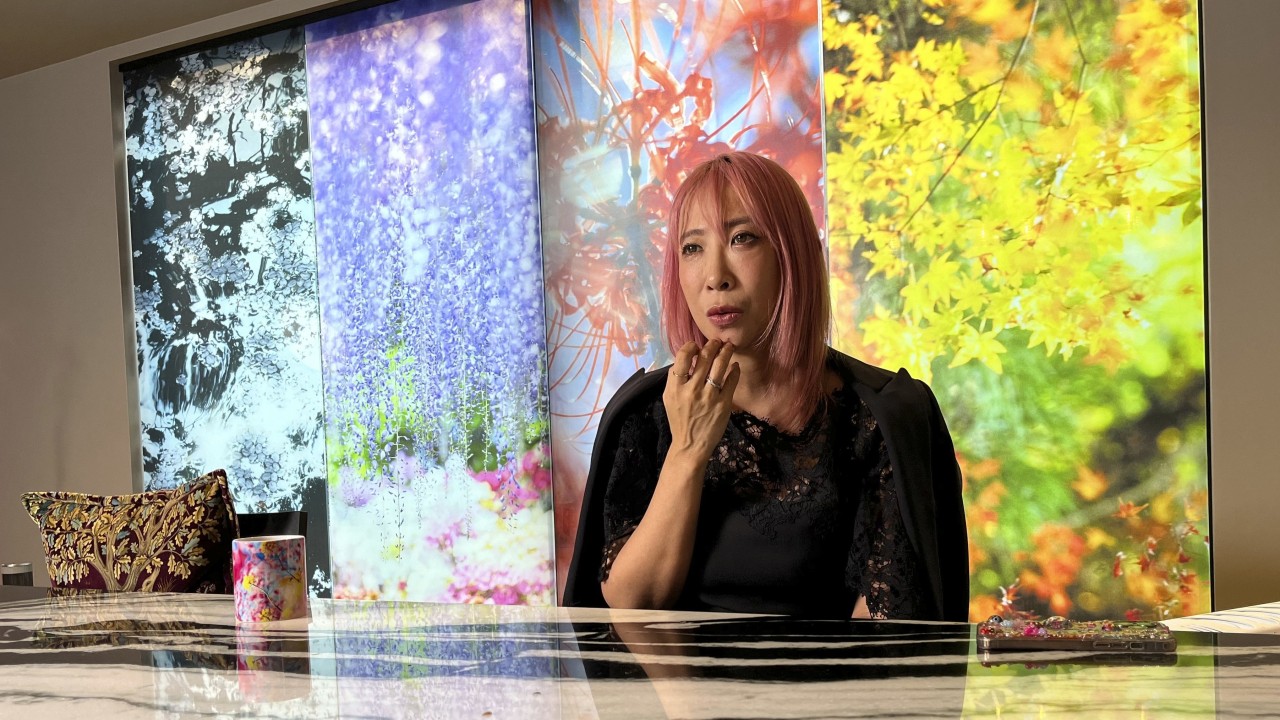
© » SOUTH CHINA MORNING POST
about 20 months ago (02/12/2024)
‘Dazzling moments in the everyday’ inspire Japanese artist Mika Ninagawa’s immersive installation Eternity in a Moment | South China Morning Post Advertisement Advertisement Art + FOLLOW Get more with my NEWS A personalised news feed of stories that matter to you Learn more Japanese filmmaker, photographer and visual artist Mika Ninagawa during an interview in her office in Tokyo...

© » OBSERVER
about 20 months ago (02/09/2024)
Review: Glenn Kaino’s ‘Walking with a Tiger’ at Pace Gallery | Observer Installation view of ‘Glenn Kaino: Walking with a Tiger’ at Pace’s 540 West 25th Street gallery...
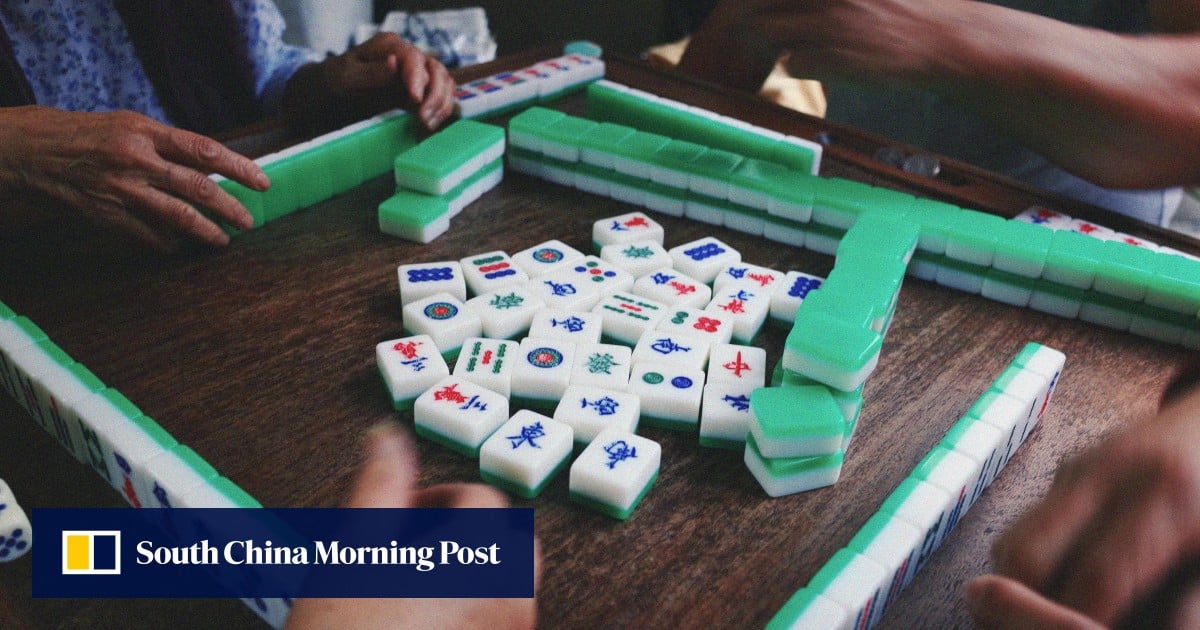
© » SOUTH CHINA MORNING POST
about 20 months ago (02/08/2024)
Different Mahjong versions, from the classical Chinese game to American mahjong, with its joker tiles, and Japanese riichi | South China Morning Post Advertisement Advertisement Chinese culture + FOLLOW Get more with my NEWS A personalised news feed of stories that matter to you Learn more There are many variations of mahjong played around the world, with different rules and scoring systems and in some, unique tiles...
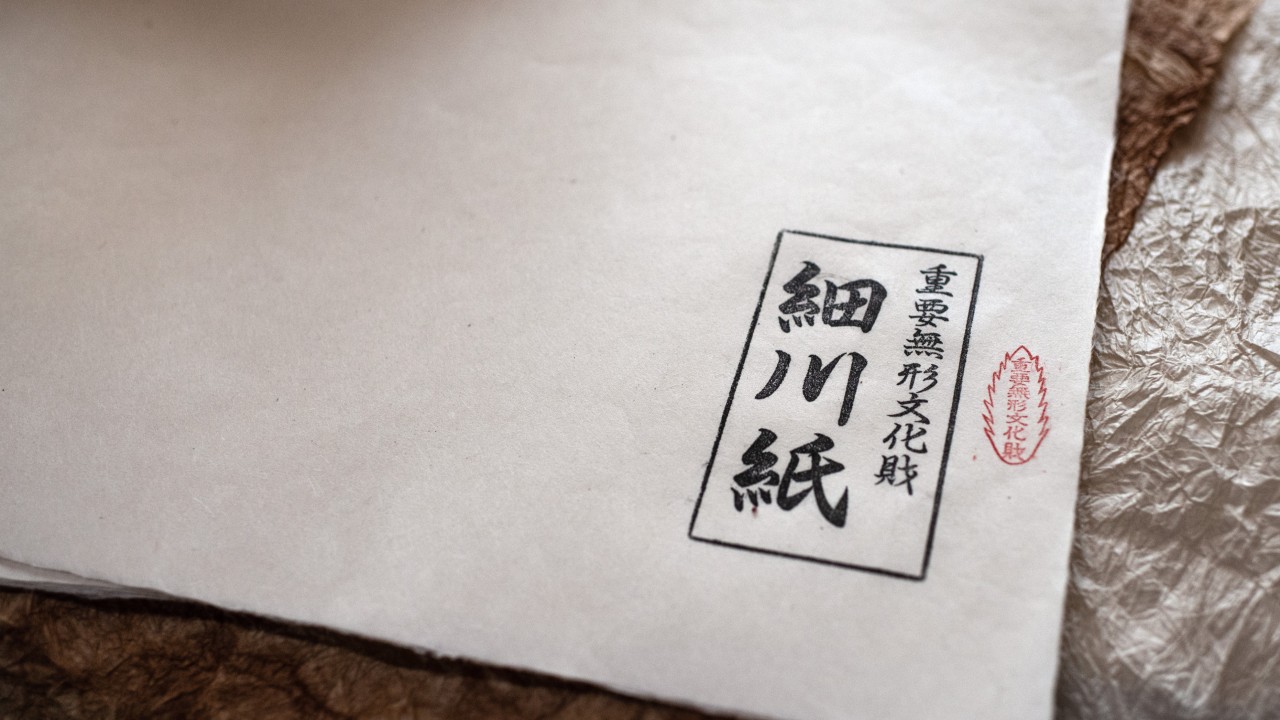
© » SOUTH CHINA MORNING POST
about 20 months ago (02/07/2024)
All about washi: Japanese handmade paper’s ancient Chinese roots, its uses from writing to home decor, and why it can cost US$120 a sheet | South China Morning Post Advertisement Advertisement Asia travel + FOLLOW Get more with my NEWS A personalised news feed of stories that matter to you Learn more Sheets of Hosokawa-shi, a type of Japanese washi recognised by Unesco as an item of intangible cultural heritage...

© » HYPERALLERGIC
about 20 months ago (02/06/2024)
Family Portrait: Japanese Family in Flux Skip to content Still from Still Walking (2008), dir...
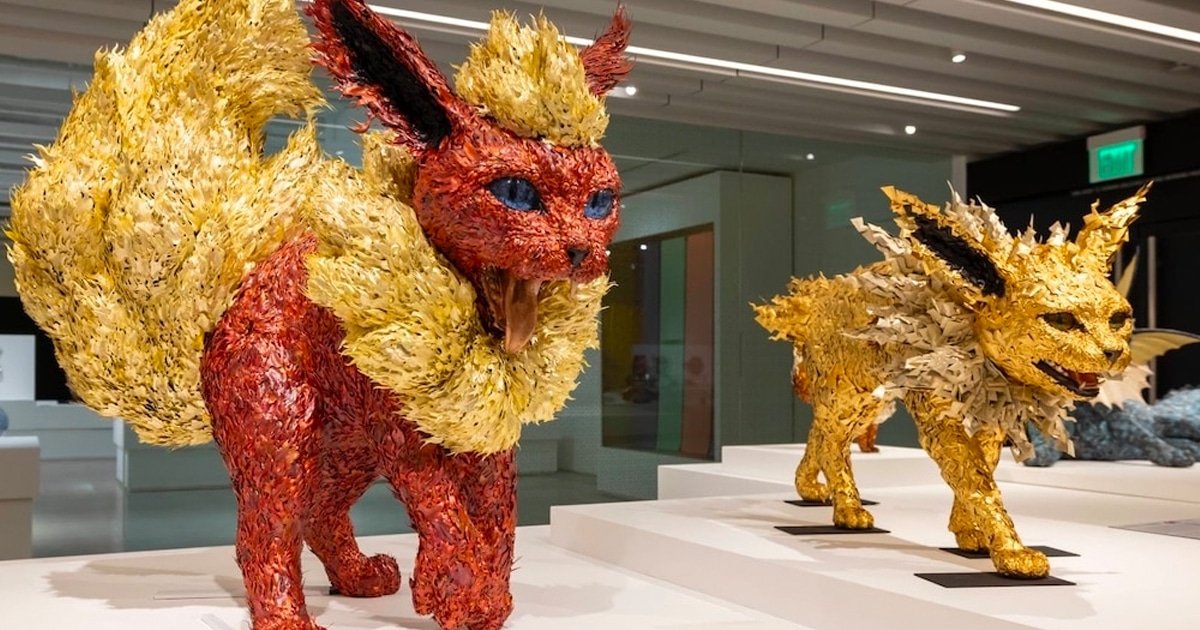
© » MODERN MET ART
about 21 months ago (01/30/2024)
New Exhibition Merges Pokémon with Japanese Craft Home / Art Unique Pokémon Exhibit Made With Traditional and Contemporary Japanese Craft Techniques By Margherita Cole on January 30, 2024 Photo: ©JAPAN HOUSE Los Angeles Since its debut in 1996, Pokémon has become a fixture of pop culture...
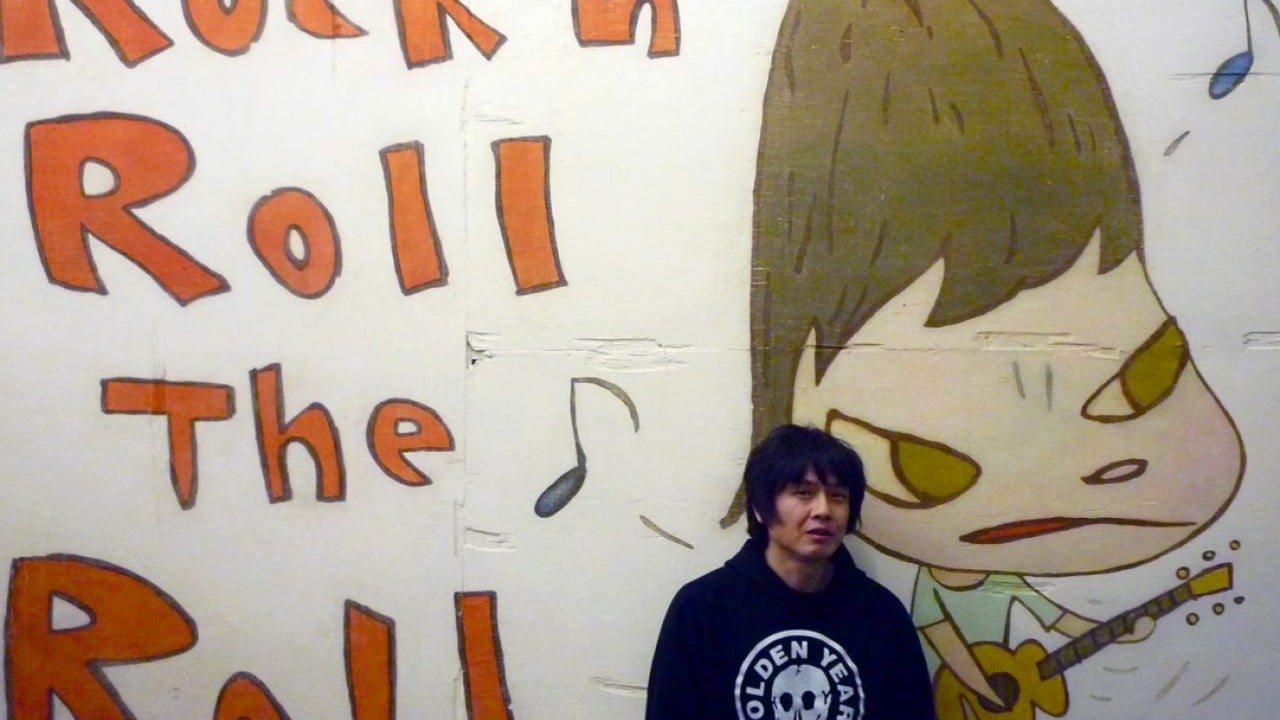
© » SOUTH CHINA MORNING POST
about 21 months ago (01/28/2024)
Japanese artist Yoshitomo Nara on his art’s meaning, and chasing the ‘carefree freedom’ of childhood | South China Morning Post Japanese artist Yoshitomo Nara on his art’s meaning, and chasing the ‘carefree freedom’ of childhood Art Yoshitomo Nara, one of Japan’s leading contemporary artists, talks about his influences, from punk rock to Kraftwerk, and what drives him – it isn’t money Kate Whitehead + FOLLOW Published: 7:15am, 29 Jan, 2024 Why you can trust SCMP I am from Aomori, in the north of Japan’s main island of Honshu...

© » SOUTH CHINA MORNING POST
about 21 months ago (01/28/2024)
A Hong Kong village house with a Balinese vibe brings Scandinavian, Moroccan and Japanese elements together seamlessly – and it all started with a single-line drawing....
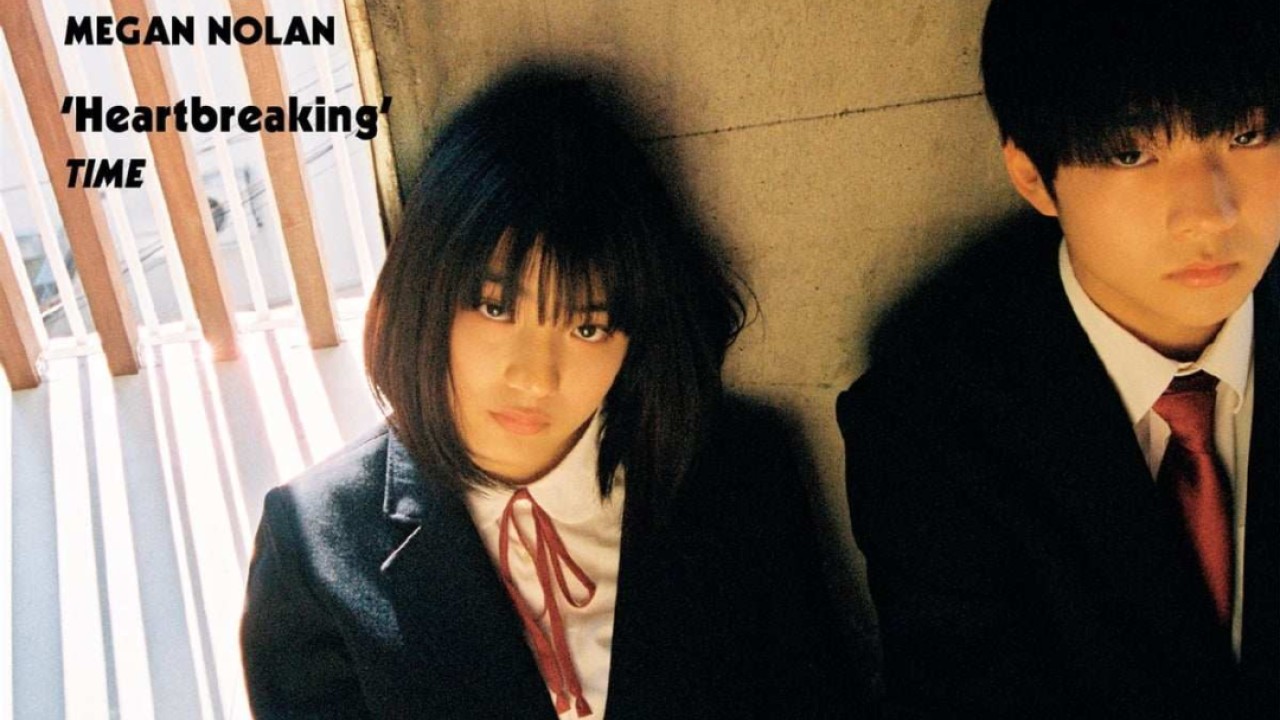
© » SOUTH CHINA MORNING POST
about 21 months ago (01/27/2024)
In the UK, Japanese literature translated into English is experiencing a boom...

© » SOUTH CHINA MORNING POST
about 21 months ago (01/26/2024)
What’s cute? From cats, including Hello Kitty, to cherubs, London exhibition ‘Cute’ explores all things adorable | South China Morning Post Advertisement Advertisement Tourism + FOLLOW Get more with my NEWS A personalised news feed of stories that matter to you Learn more Hello Kitty toys are displayed as part of the exhibition “Cute” at Somerset House in London...
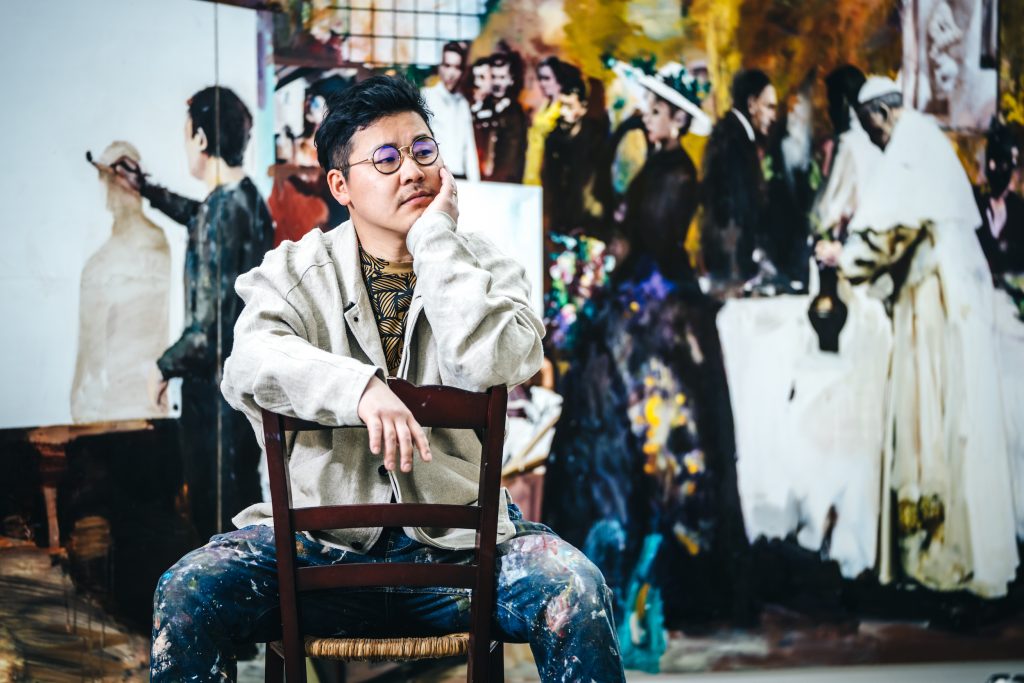
© » ARTNET
about 22 months ago (12/18/2023)
The artist's philosophical paintings are on view at the Kyoto City Kyocera Museum of Art...

© » LARRY'S LIST
about 22 months ago (12/18/2023)
Art Collector of Japanese Art Who Began with a £55 Punt Sees His Collection Go on Show at the Royal Academy - via The Jewish Chronicle...

© » THE GUARDIAN
about 22 months ago (12/12/2023)
‘We laughed and cried a lot’: a Japanese photographer in Alabama – in pictures | Art and design | The Guardian Skip to main content ‘We laughed and cried a lot’: a Japanese photographer in Alabama – in pictures ‘He looked very proud’ … Matthew in His Car, 2019 The Band, 2017 When Japanese photographer Fumi Nagasaka was invited by her friend Tanya to visit her home town of Dora, Alabama, it proved to be a moment of creative inspiration...
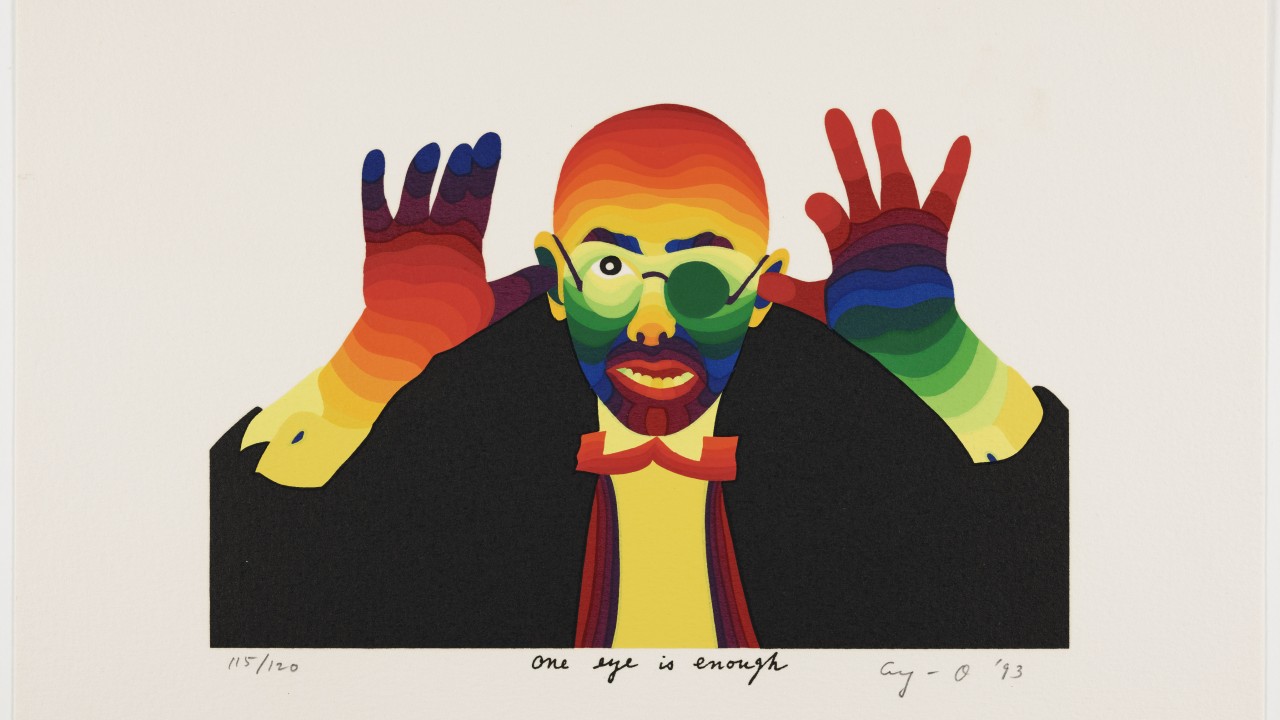
© » SOUTH CHINA MORNING POST
about 22 months ago (12/12/2023)
Japanese ‘rainbow artist’ Ay-O’s debut solo Hong Kong exhibition the first in a series highlighting significant Asian artists | South China Morning Post Advertisement Advertisement Art + FOLLOW Get more with my NEWS A personalised news feed of stories that matter to you Learn more Japanese artist Ay-O’s screenprint “Homage to Rousseau” is part of his exhibition at the M+ museum of visual culture in the West Kowloon Cultural District...
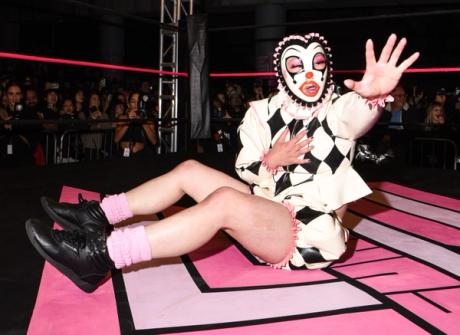
© » THEARTNEWSPER
about 22 months ago (12/08/2023)
Girls on top: wrestling smackdown draws the Art Week Miami crowds Art market Museums & heritage Exhibitions Books Podcasts Columns Technology Adventures with Van Gogh Search Search Art Basel in Miami Beach 2023 news Girls on top: wrestling smackdown draws the Art Week Miami crowds Sukeban, a group of Japanese women wrestlers, drew the crowds to a skatepark under an overpass at one of Art Week Miami’s more unusual events Gareth Harris 8 December 2023 Share Dressed to kill: Bingo, one of the competitors in the Sukeban Collective wrestling tournament on Wednesday night Deonté Lee/BFA.com It was a first for Art Week Miami: a Japanese women’s wrestling event held in a skatepark in the city’s downtown area...
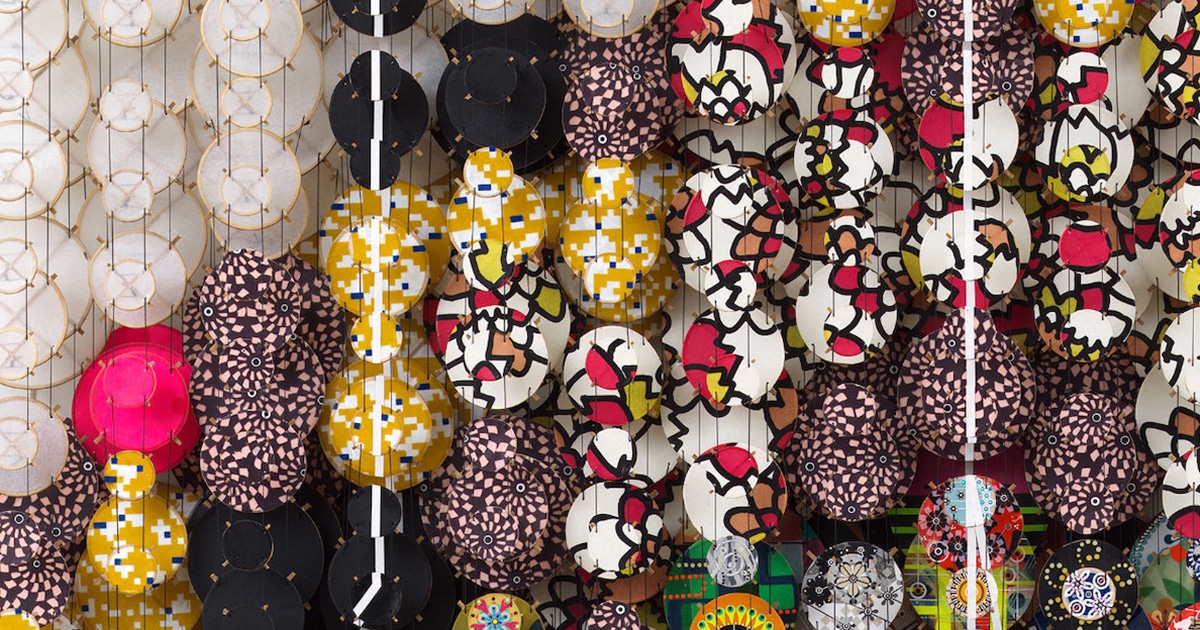
© » MODERN MET ART
about 22 months ago (12/06/2023)
Traditional Craftsmanship Merges With Digital Pixels in Installation Home / Art / Installation Suspended Paper Kite Installations Explore Artist’s East Asian and Western Identities in the Digital Age By Margherita Cole on December 6, 2023 Japanese-American artist Jacob Hashimoto unveiled an immersive installation at the Miles McEnery Gallery in New York City...
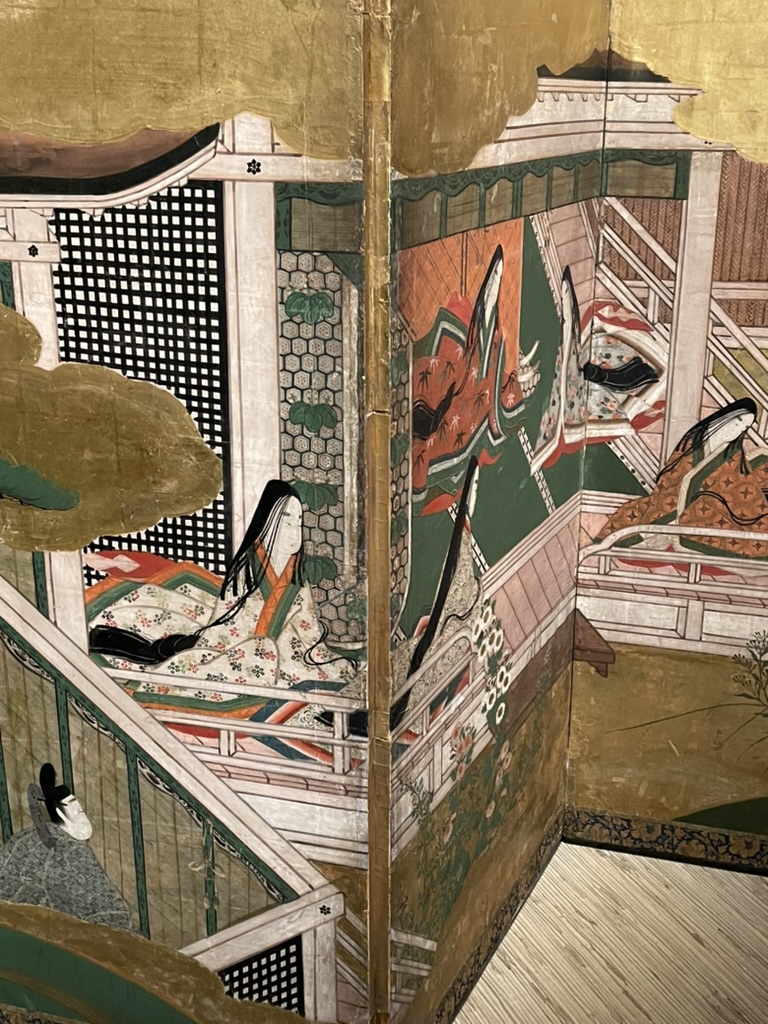
© » DIANE PERNET
about 23 months ago (12/03/2023)
Echoes of Genji: Unraveling Timeless Emotions from Heian Elegance to Modern Reverie at the Guimet Museum till March 25th – A Shaded View on Fashion Dear Shaded Viewers, What do a beloved 1980s manga series “Asakiyume mishi” and an exquisite 18th-century lacquer box once owned by Marie-Antoinette share in common? At first glance, not much...
© » KUMI CONTEMPORARY JAPANESE ART
about 24 months ago (11/01/2023)
Chiho Aoshima, a prominent Japanese artist, burst onto the international art stage in the early 2000s, showcasing a distinctive fusion of traditional Japanese artistic techniques and contemporary themes...

© » BOMB
about 24 months ago (10/27/2023)
BOMB Magazine | Planet Q Necessary (Required) Cookies that the site cannot function properly without...
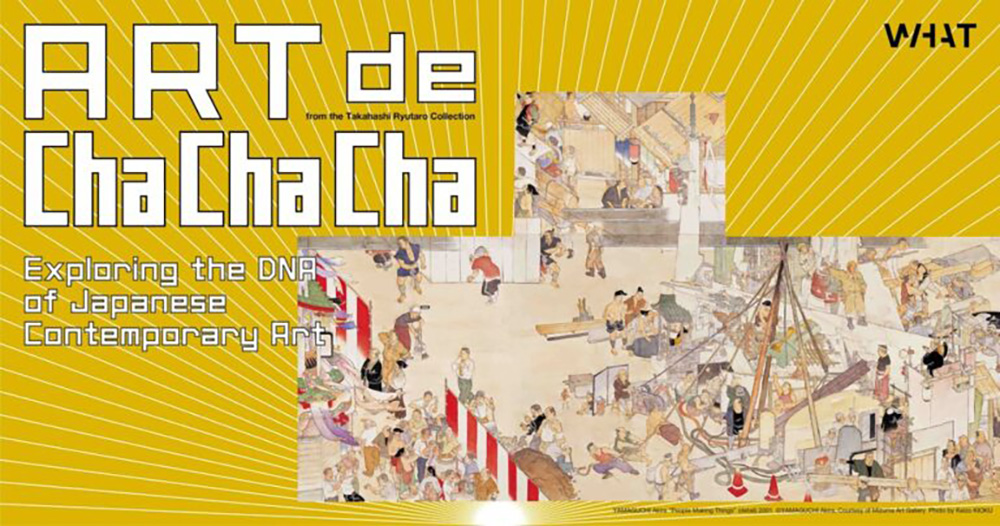
© » LARRY'S LIST
about 25 months ago (10/05/2023)
WHAT MUSEUM, situated in Tennoz, Tokyo, is currently hosting a captivating exhibition entitled "ART de Cha Cha Cha - Exploring the DNA of Japanese Contemporary Art -" from the esteemed Takahashi Ryutaro Collection...
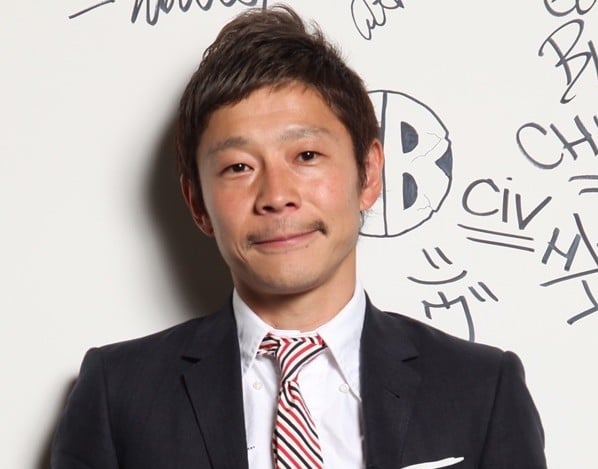
© » LARRY'S LIST
about 37 months ago (10/05/2022)
Japanese Mega-Collector Yusaku Maezawa Is Giving Away $9 Million to His Twitter Followers to See If Money Makes People Happy - via artnet news...
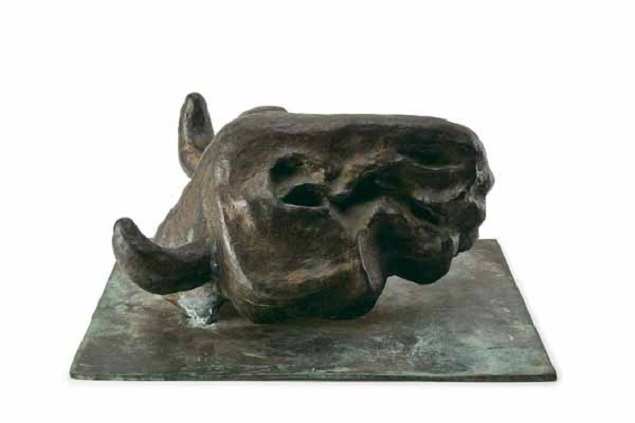
© » LARRY'S LIST
about 37 months ago (10/05/2022)
What happens when a fish baron from Japan decides to collect contemporary Indian art and wants to sell some of his precious collection? He goes to a distinguished gallery in Mumbai, Pundoles, that has history......
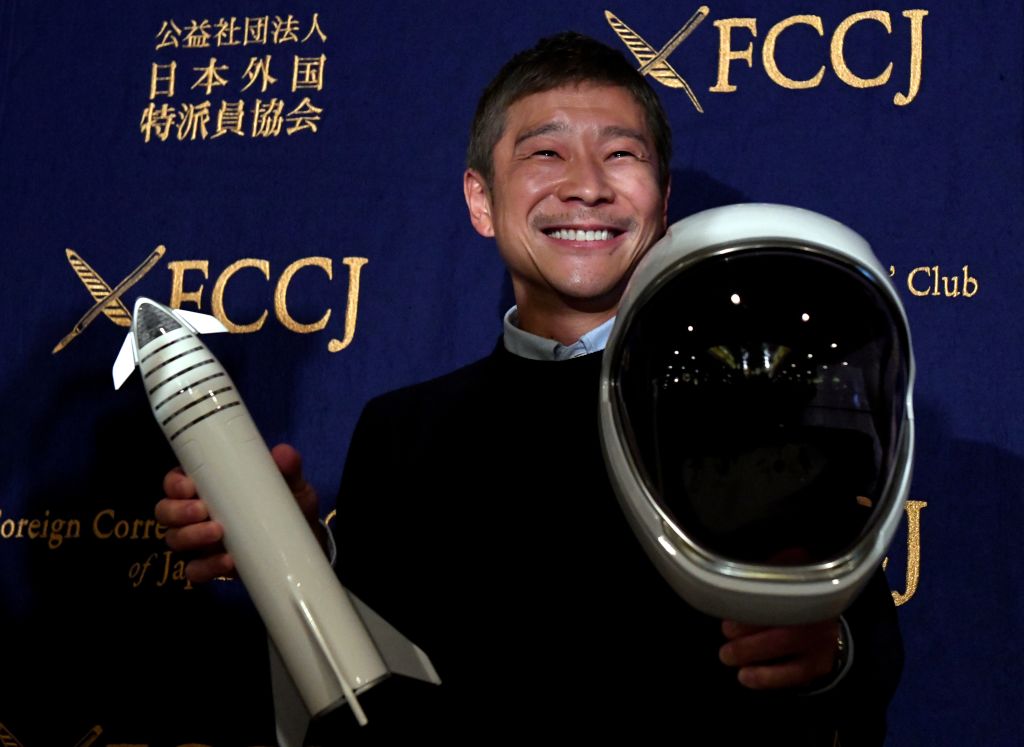
© » LARRY'S LIST
about 37 months ago (10/05/2022)
âI Will Not Run or Hideâ: Billionaire Art Collector Yusaku Maezawa, Famous for Buying Basquiats, Responds to Tax-Evasion Accusations - via artnet news...

© » LARRY'S LIST
about 37 months ago (10/05/2022)
DUBAI: Christie’s Paris is hosting an online charity auction of Middle Eastern art to benefit artists through the Institut du Monde Arabe (IMA)...

© » ARTS EQUATOR
about 67 months ago (04/16/2020)
Weekly Southeast Asia Radar: Japanese ska in Saigon, experimental music in Yangon | ArtsEquator Thinking and Talking about Arts and Culture in Southeast Asia ArtsEquator Radar Alberto Prieto via Saigoneer April 16, 2020 ArtsEquator’s Southeast Asia Radar features articles and posts about arts and culture in Southeast Asia, drawn from local and regional websites and publications – aggregated content from outside sources, so we are exposed to a multitude of voices in the region...

© » HIGH FRUCTOSE
about 70 months ago (01/18/2020)
Toshio Saeki, the legendary Japanese artist known for blending eroticism, horror, and humor in his works, passed away in November at the age of 74...

© » HIGH FRUCTOSE
about 70 months ago (01/10/2020)
Painter Maha Ahmed’s creature-filled paintings are inspired by traditional Persian and Japanese techniques and sensibilities...

© » HIGH FRUCTOSE
about 71 months ago (12/19/2019)
Seiran Tsuno's ghostly dresses rest above the bearer and recontextualize the human body...

© » ARTS EQUATOR
about 85 months ago (10/25/2018)
Some Southeast Asian picks from the Busan International Film Festival (via Bangkok Post) | ArtsEquator Thinking and Talking about Arts and Culture in Southeast Asia Articles October 25, 2018 How do Aceh and Japan, two places that seem unrelated, separated by a vast distance of land and sea, connect on the personal and historical level? For one, they both have been hit by a tsunami — Aceh in the massive tragedy that struck many parts of Southeast Asia in 2004 and Japan in 2011...

© » ARTS EQUATOR
about 88 months ago (07/18/2018)
The World Cup, The Japanese Occupation and Our Painful Inheritance Thinking and Talking about Arts and Culture in Southeast Asia Articles July 18, 2018 This article is republished from the Singapore International Film Festival editorial...
-
1970-1979
Jiri Kovanda
1979This ephemeral installation by Jirí Kovanda, documented in the same way as his performances with a photograph and a text, belongs to a body of works that took place in his apartment/studio...
-
1980-1989
Martin Kippenberger
Drawing & Print
1989(Drawing & Print) Untitled is a work on paper by Martin Kippenberger comprised of several seemingly disparate elements: cut-out images of a group of dancers, a japanese ceramic vase, and a pair of legs, are all combined with gestural, hand-drawn traces and additional elements such as a candy wrapper from a hotel in Monte Carlo and a statistical form from a federal government office in Wiesbaden, Germany...
-
1990-1999
Bruce Conner
Drawing & Print
1995(Drawing & Print) Bruce Conner is best known for his experimental films, but throughout his career he also worked with pen, ink, and paper to create drawings ranging from psychedelic patterns to repetitious inkblot compositions...
Barbara Bloom
1997In the 1980’s, while browsing Parisian fleamarkets, Barbara Bloom stumbled into an anonymous watercolor (dating to around 1960) in one of Paris’ fleamarkets, probably a study made by an interior designer for a bedroom...
-
2000-2009
Pierre Gonnord
2002Nakayama is part of a larger body of work by Pierre Gonnord focusing on the analysis and description of the lifestyles of urban youth in large Western cities...
Martin Boyce
2003In the installation Our Love is like the Flowers, the Rain, the Sea and the Hours, Martin Boyce uses common elements from public gardens – trees, benches, trashbins– in a game which describes at once a social space and an abstract dream space...
Hiraki Sawa
2006Hako (2006) depicts a mysterious and dystopic landscape where the world becomes flat: distance between different spaces, depth of field and three-dimensional perceptions are canceled...
Shimabuku
2006For the two-channel work Asking the Repentistas – Peneira & Sonhador – to remix my octopus works Shimabuku asked two Brazilian street singers to compose a ballad about his previous works with octopi (in which he created traditional Japanese ceramic vessels to catch octopi, with a fisherman who took him on his boat to test them out as we can see on one of the channel)...
Sung Hwan Kim
2007An early work in Sung Hwang Kim’s career, the video Summer Days in Keijo—written in 1937 is a fictional documentary, the film is based on a non-fiction travelogue, In Korean Wilds and Villages , written by Swedish zoologist Sten Bergman, who lived in Korea from 1935 to 1937...
Kadar Brock
2007Kadar Brock creates dynamic abstract paintings that are born from a process of painting, scraping, priming, sanding, and painting again...
Ahmad Fuad Osman
2007Recollections of Long Lost Memories by Ahmad Fuad Osman is a series of 71 black and white sepia-toned archival photographs that chart, with nostalgia, the social encounters between hierarchies of life in the Malay world...
Hassan Massoudy
Drawing & Print
2008(Drawing & Print) Ranging from Baudelaire to the Koran, each of Hassan Massoudy’s drawings are titled with a quotation from a text...
Shilpa Gupta
2008The three monkeys in Don’t See, Don’t Hear, Don’t Speak are a recurring motif in Gupta’s work and refer to the Japanese pictorial maxim of the “three wise monkeys” in which Mizaru covers his eyes to “see no evil,” Kikazaru covers his ears to “hear no evil,” and Iwazaru covers his mouth to “speak no evil.” For the various performative and photographic works that continue this investigation and critique of the political environment, Gupta stages children and adults holding their own or each other’s eyes, mouths and ears...
Koki Tanaka
2009Walking Through is one of a series of videos—sometimes humorous, often absurd—that record the artist’s performative interactions with objects in a particular site...
Taro Izumi
2009Steak House is a video representing two small puppets smearing the artist’s face with paint while he is sleeping...
Matti Braun
2009During a residency in 2009 at L’appartement 22 in Rabat, the artist traveled in Morocco and Senegal on the traces of the German sculptor Arno Breker...
Jean-Luc Moulène
2009Head Box by J ean-Luc Moulène i s not the representation of a space but a real space that remains in the domain of sculpture which the artist develops in parallel with his photographic practice...
-
2010-2019
Tomoko Yoneda
2010Yoneda’s Japanese House (2010) series of photographs depicts buildings constructed in Taiwan during the period of Japanese occupation, between 1895 and 1945...
Koki Tanaka
2010Tanaka’s unique understanding of objects and materials is reflected in the four photographs that document his Process of Blowing Flour ...
Motoyuki Daifu
2010Seven family members and a cat all squeezed into the small five-room house, where Motoyuki Daifu grew up in Yokohama...
Adrian Villar Rojas
2010The two drawings in the Kadist Collection are part of a larger series entitled Las Mariposas Eternas (The Eternal Butterflies)...
Yosuke Takeda
2010Yosuke Takeda gives the viewer brightly colored views, each of which he has searched out and patiently waited for...
Jane Jin Kaisen and Guston Sondin-Kung
2010The Woman, The Orphan, and The Tiger begins with the sound of women’s voices describing histories of violence, of things repressed and silenced...
Eric Baudelaire
2011In a society saturated by images, Eric Baudelaire is interested in political events that have not found their representation...
Hong-Kai Wang
2011The video Music While We Work (2011) is the first part/work of a long-term research project started in 2010...
Yosuke Takeda
2011Yosuke Takeda gives the viewer brightly colored views, each of which he has searched out and patiently waited for...
Vidya Gastaldon
2011Gastaldon has made a number of soft sculptures using materials associated with knitting and sewing that have alternately fetishistic, nightmarish or contemplative qualities...
Yoshinori Niwa
2011Yoshinori Niwa’s investigation into the monetary system and material goods is witnessed across a range of his works...
Kwan Sheung Chi
2012Kwan Sheung Chi’s work One Million is a video work depicting the counting of bills...
Meiro Koizumi
2012This video installation was made for the exhibition “Journey to the West” held in January 2012 in New Delhi, where a group of curators invited six Japanese artists to produce a work to be made around the relationship between Japan and India...
James T. Hong
2012Taiwan WMD (Taiwan and Weapons of Mass Destruction) is part of a long-term research started in early 2010 on the history and aftermath effects of Japanese biological and chemical warfare in China during WWII, as well as the unknown history of Taiwan’s nuclear program...
Yuki Kimura
2012Kastura (2012) is an installation consisting of 24 black-and-white photographs of the Katsura Imperial Villa in Kyoto bequeathed by Kimura’s grandfather; free-standing structures on which they are hung; and ornamental plants...
Tadasu Takamine
2012The video work Japan Syndrome is a continuation of his lines of inquiry, taking post-Fukushima Japan as a case study...
Koki Tanaka
2013This artwork was part of a group of projects presented in the Japanese Pavilion at the Venice Biennale in 2013...
Shay Arick
2013Part of a series of videos called LIFE, where Shay Arik videos that re-enact iconic journalistic photographs...
Phan Thao Nguyên
2013On September 22, 1940 the French signed an accord, which granted Japanese troops the right to occupy Indochina...
Phan Quang
2013Phan Quang’s portrait series Re/cover grapples with a lesser-known history in Vietnam...
YOUNG-HAE CHANG HEAVY INDUSTRIES
2013Pacific Limn weaves together three narratives that comment on hyper-capitalism pan-Pacific cities that San Francisco exemplifies...
Eric Baudelaire
2013With the war-torn Beirut cityscape as its backdrop—urban alleys, glistening beaches, abandoned buildings—Eric Baudelaire’s complex film, The Ugly One , unfolds in a time and place that vacillates among revolutionary narratives of the past, the fragile and ever-changing political situation of the present, and attempts to piece together the memories of those that live, or once lived, in the city...
Gozo Yoshimasu
Drawing & Print
2014(Drawing & Print) Gozo Yoshimasu’s visual-poetry series Dear Monster (Kaibutsu-kun) explores his response to the March 2011 Tohoku earthquake and tsunami...
Gozo Yoshimasu
Drawing & Print
2014(Drawing & Print) Gozo Yoshimasu’s visual-poetry series Dear Monster (Kaibutsu-kun) explores his response to the March 2011 Tohoku earthquake and tsunami...
Malik Nejmi
2014La Chambre Marocaine series is a means to reconnect personally to his connection to family history and objectively assess the process of reconnection...
Yosuke Takeda
2014Yosuke Takeda gives the viewer brightly colored views, each of which he has searched out and patiently waited for...
Sara Eliassen
2014Sara Eliassen’s video work A Blank Slate (2014) employs cinematic effect to investigate the relationships between subjectivity, gaze, and memory...
Tomoko Kikuchi
2014The series Funerals under Neon Lights by Tomoko Kikuchi focuses on how transgender people’s ritual became a vital part of funerals in rural China...
Meiro Koizumi
2015Words by Meiro Koizumi: “The video installation work In the State of Amnesia is made with Mr...
Bontaro Dokuyama
2015In Over There, Bontaro Dokuyama conducted a series of workshops with various people who had been forced to relocate in temporary housing after the Fukushima accident...
Melvin Moti
Drawing & Print
2015(Drawing & Print) Cluster Illusion examines the brain’s tendency to recognize a pattern as something abstract...
Akira Takayama
2015In Akira Takayama’s work Happy Island – The Messianic Banquet of the Righteous , five video screens perpendicular to the floor feature footage of cows grazing and resting in the rolling hills of a farmland...
Tatsuki Masaru
2016For the works KAKERA, Bullet Train and KAKERA, Loving God Tatsuki Masaru traveled throughout Japan to visit museums holding kakera (which translates to “fragments”) of Jomon Period potteries –Japan’s pre-history 2,300-15,000 years ago...
Simon Fujiwara
2016Masks is a series of abstract paintings by Simon Fujiwara that together form a giant, fragmented portrait of German Chancellor Angela Merkel’s face...
Park Chan-Kyong
2016Park Chan-Kyong’s film Citizen’s Forest draws on two works for which the artist has a particular fondness: The Lemures , an incomplete painting by Korean artist Oh Yoon, and Colossal Roots , a poem by Korean poet Kim Soo-Young...
Gozo Yoshimasu
Drawing & Print
2017(Drawing & Print) Gozo Yoshimasu’s double-sided work on paper Fire Embroidery explores his response to the March 2011 Tohoku earthquake and tsunami...
Chikako Yamashiro
2017The film installation Mud Man by Chikako Yamashiro is set on Okinawa and South Korea’s Jeju Islands, two locations at the center of local controversies surrounding the presence of the United States military...
Yuichiro Tamura
2017The installation Hey Daddy, Hey Brother comprises a series of “Sukajan” jackets, which Tamura collected over a period of several years...
Mika Tajima
2017Mika Tajima’s Pranayama sculptures are built from carved wood and chromed Jacuzzi jets and are presented as artefacts...
Ali Cherri
2017As a discipline born at the same time as colonialism, archeology is struggling to rid itself of this sad context...
Pooja Gurung and Bibhusan Basnet
2018DADYAA: The Woodpeckers of Rotha by Pooja Gurung and Bibhusan Basnet illuminates a unique and seldom seen international perspective on indigenous cultures and contemporary social issues in the Nepali context...
Luka Yuanyuan Yang
2019Composed of three photographic panels, Three Times at Yamato Hotel by Luka Yuanyuan Yang is a part of the artist’s ongoing project Dalian Mirage , a seven act play in a theatre staged as the city of Dalian...
Ryan Villamael
2019Behold A City 4 extols the old grandeur of Manila, the nation’s storied capital – the complex nexus of heritage, modernity, and all sorts of compulsions, political or otherwise, that attempt to define it...
Park Chan-Kyong
2019Park Chan-Kyong’s otherworldly film Belated Bosal primarily follows two women as they navigate their way up a spectral mountain and through what appears to be a history museum or nuclear disaster bunker...
-
2020-2029
Andrew Norman Wilson
2020Z = |Z/Z•Z-1 mod 2|-1: Lavender Town Syndrome by Andrew Norman Wilson is a multi-channel video that uses three different imaging technologies—a photographic lens, photorealistic ray tracing animations, and fractal ray-marching animations—to travel through three constructed environments...
Wendy Cabrera Rubio
2021Victory Through Air Power III (1943) by Wendy Cabrera Rubio is part of a series of quilted maps that reproduce different scenes from the eponymous film...
James Webb
2022Referencing psychology, philosophy, and spiritualism, A series of personal questions addressed to a Hikimawashi kappa traveling coat by James Webb is an ongoing series in which the artist poses spoken questions to objects via a speaker installed near the object on display...
Bady Dalloul
2022With Inner Child , Bady Dalloul continues his ongoing reflection on migration and belonging, putting in balance levantine and Japanese histories...
Anju Dodiya
2022The Shedding by Anju Dodiya is part of a series of mattress paintings the artist creates using fabric stretched on padded and shaped boards...




